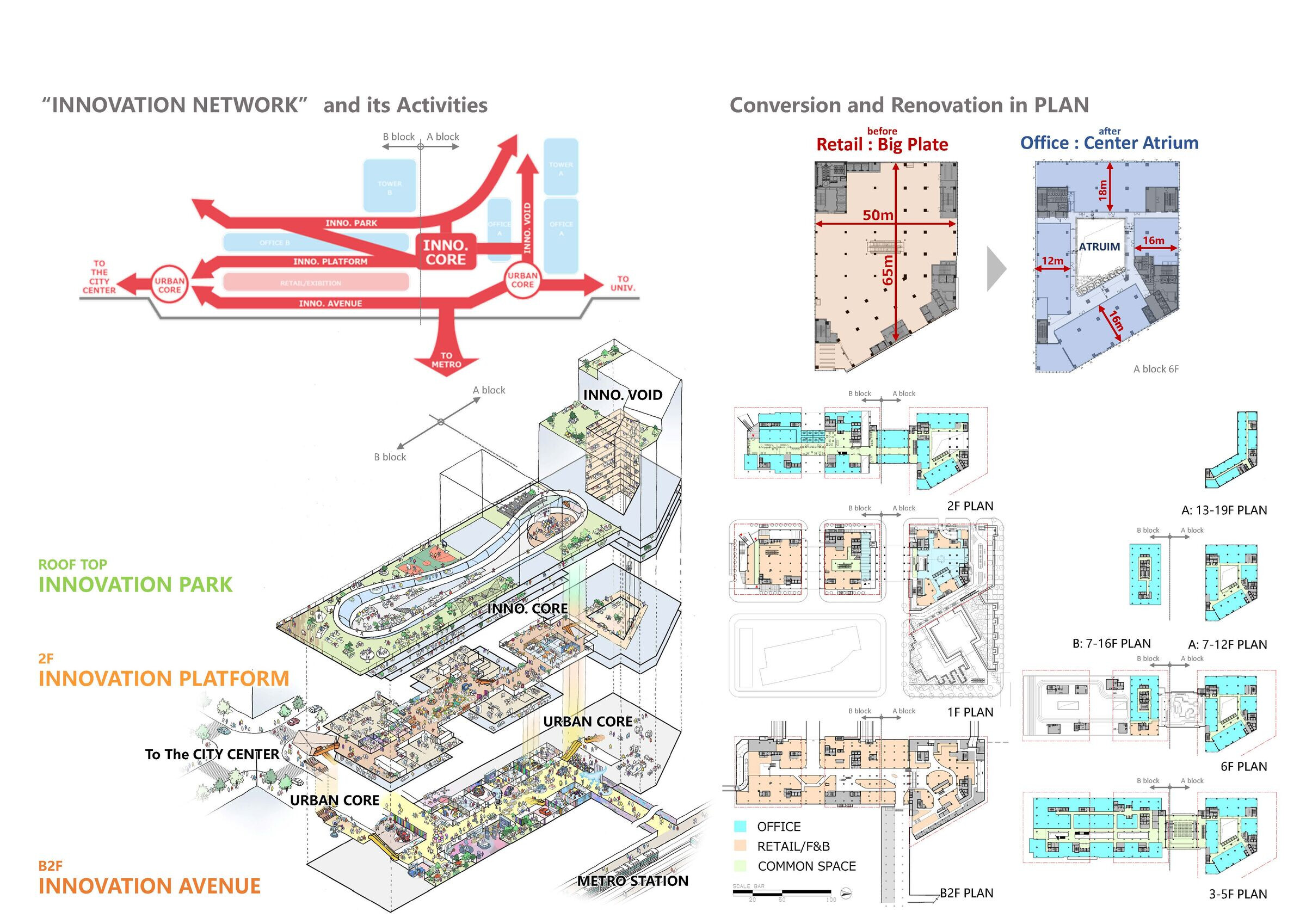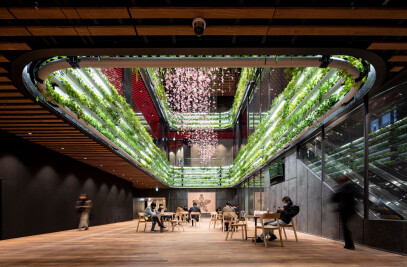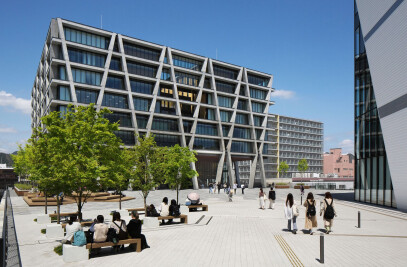This project is a conversion of the Ding Hao Building, a 200,000 square-meter commercial and office complex completed in 2003 and 2008 in Zhongguancun, Beijing, an area known as the Silicon Valley of China.
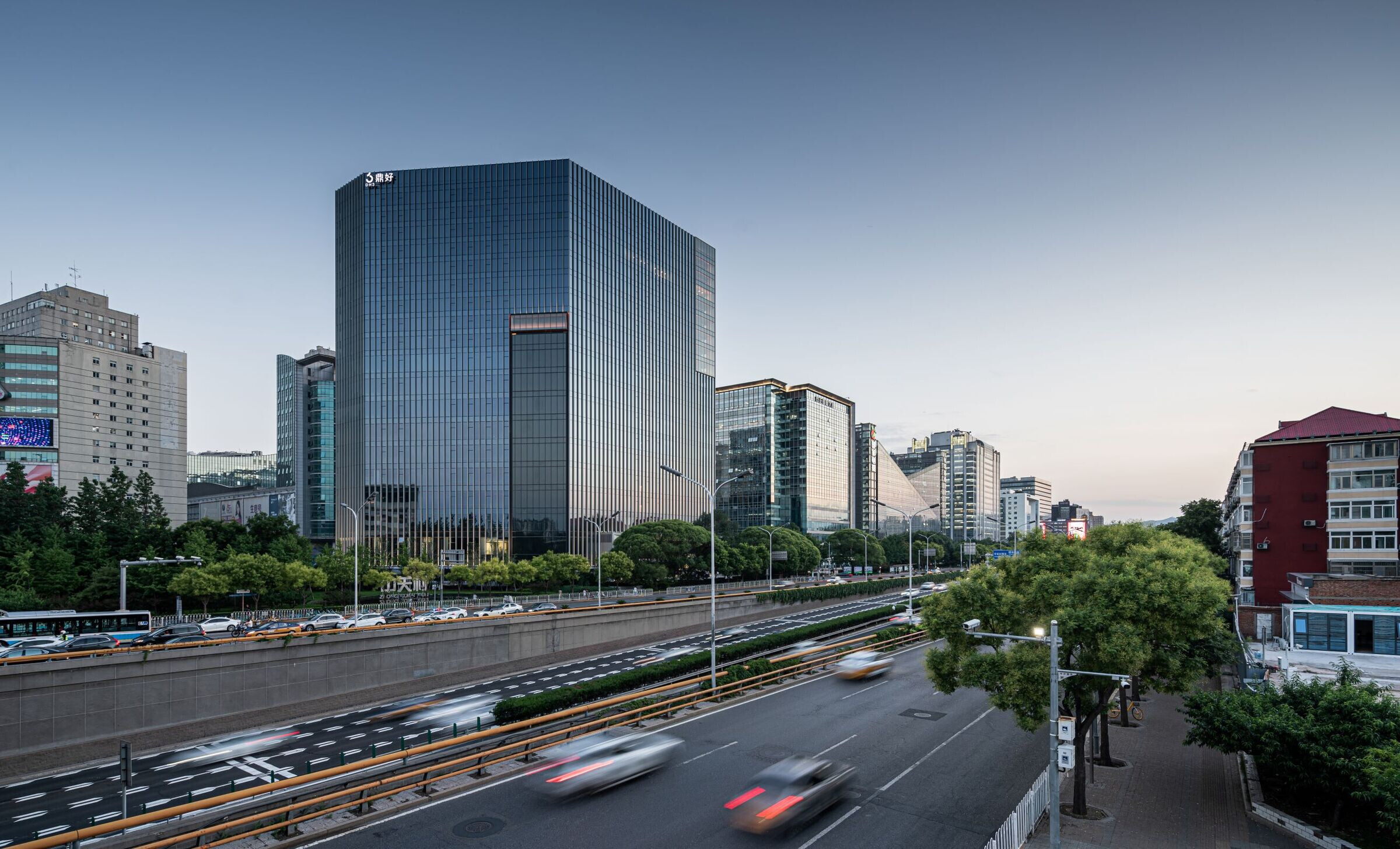

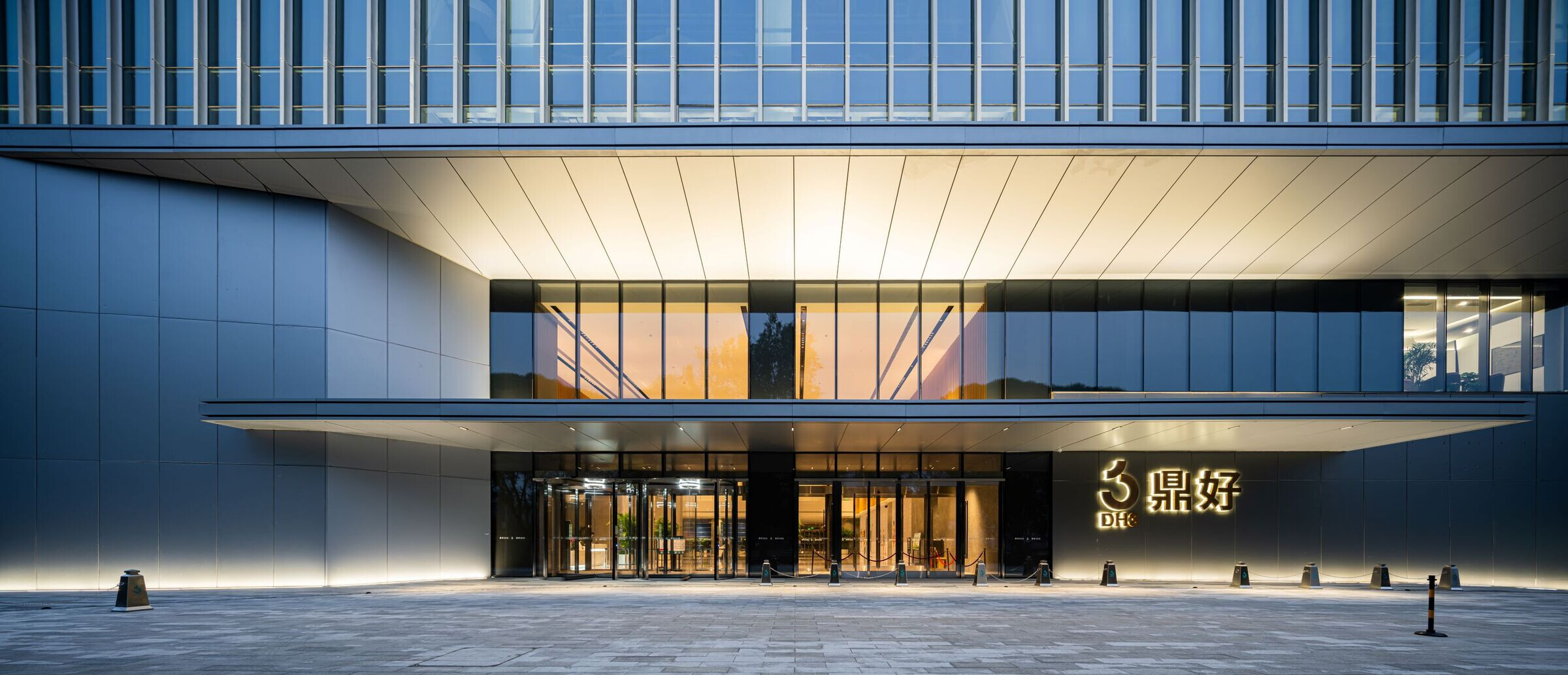
Many IT companies are headquartered in Zhongguancun, and with Peking University and Tsinghua University located nearby, the area has become a major hub of advanced companies in Beijing. The building stands on a corner site that can be considered the gateway to the Zhongguancun area in relation to Beijing’s Fourth Ring Road, and also has a landmark presence in the area with two basement levels directly connected to Zhongguancun Station on Subway Line 4.

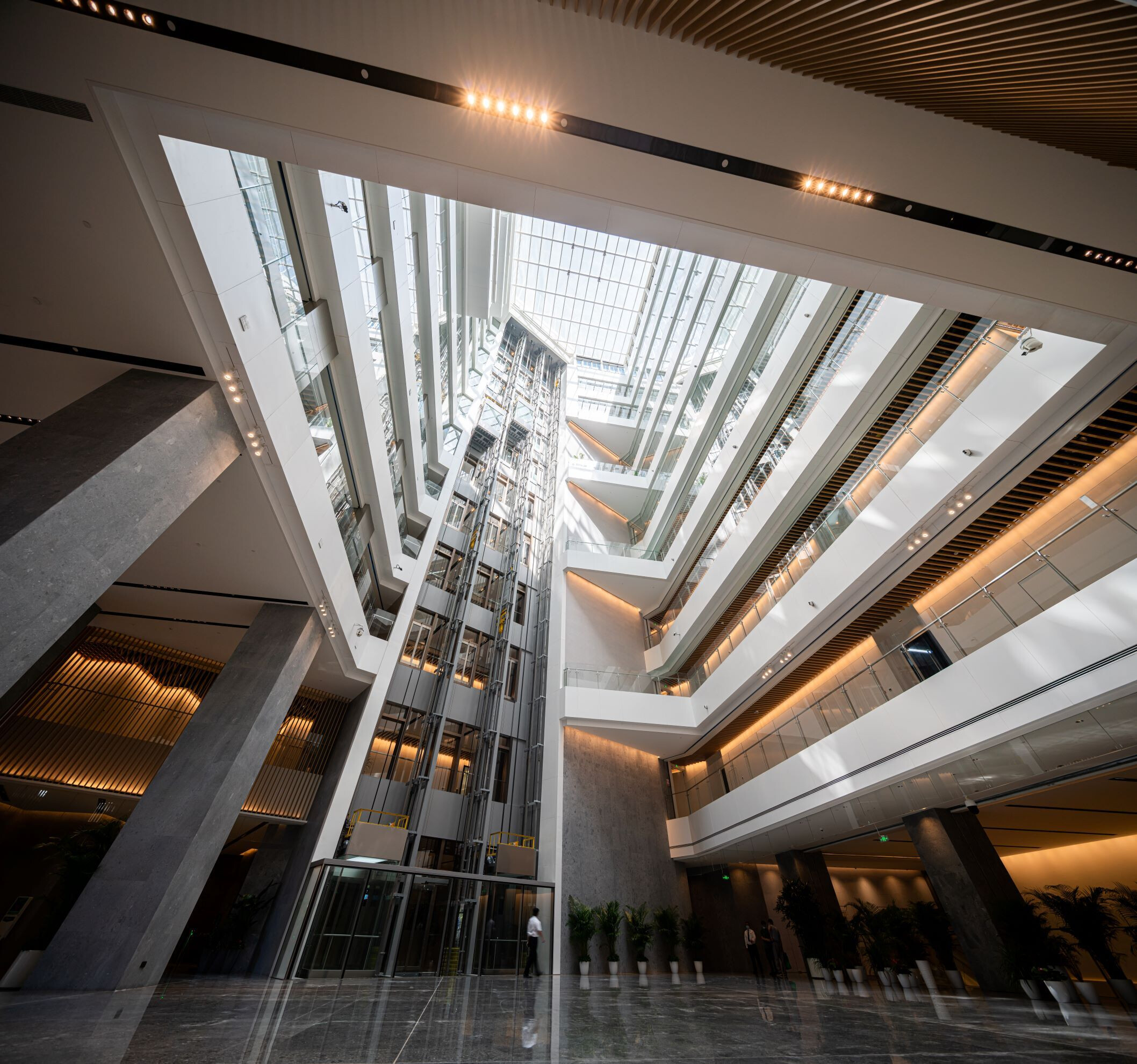
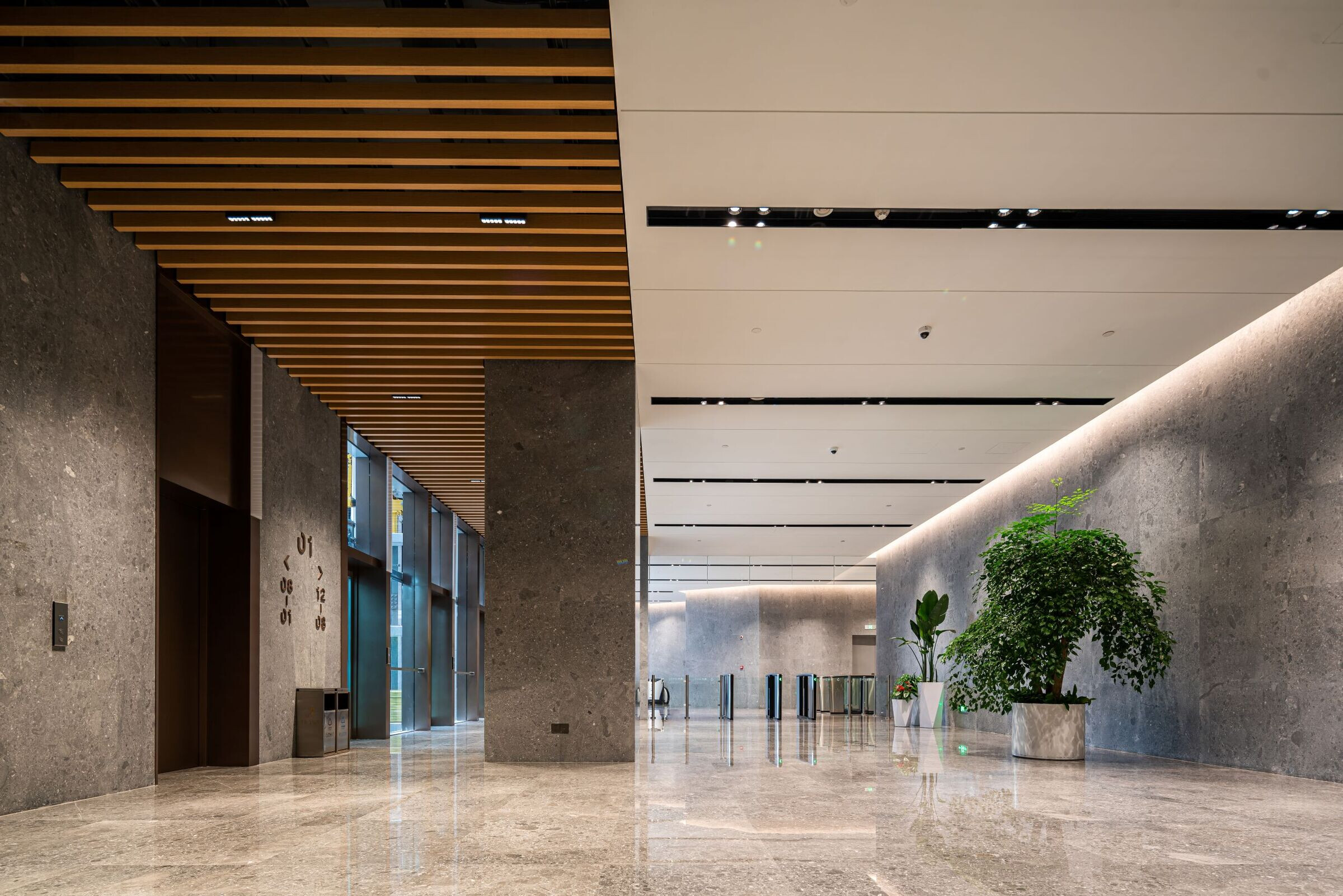

However, the bustling market for cutting-edge electronic components has waned with the changing times, and in recent years, the building had become crowded with small retail stores. In this renovation, we took on the challenge of revitalizing the building as high-end office space in response to the increasing demand for business functions in buildings.

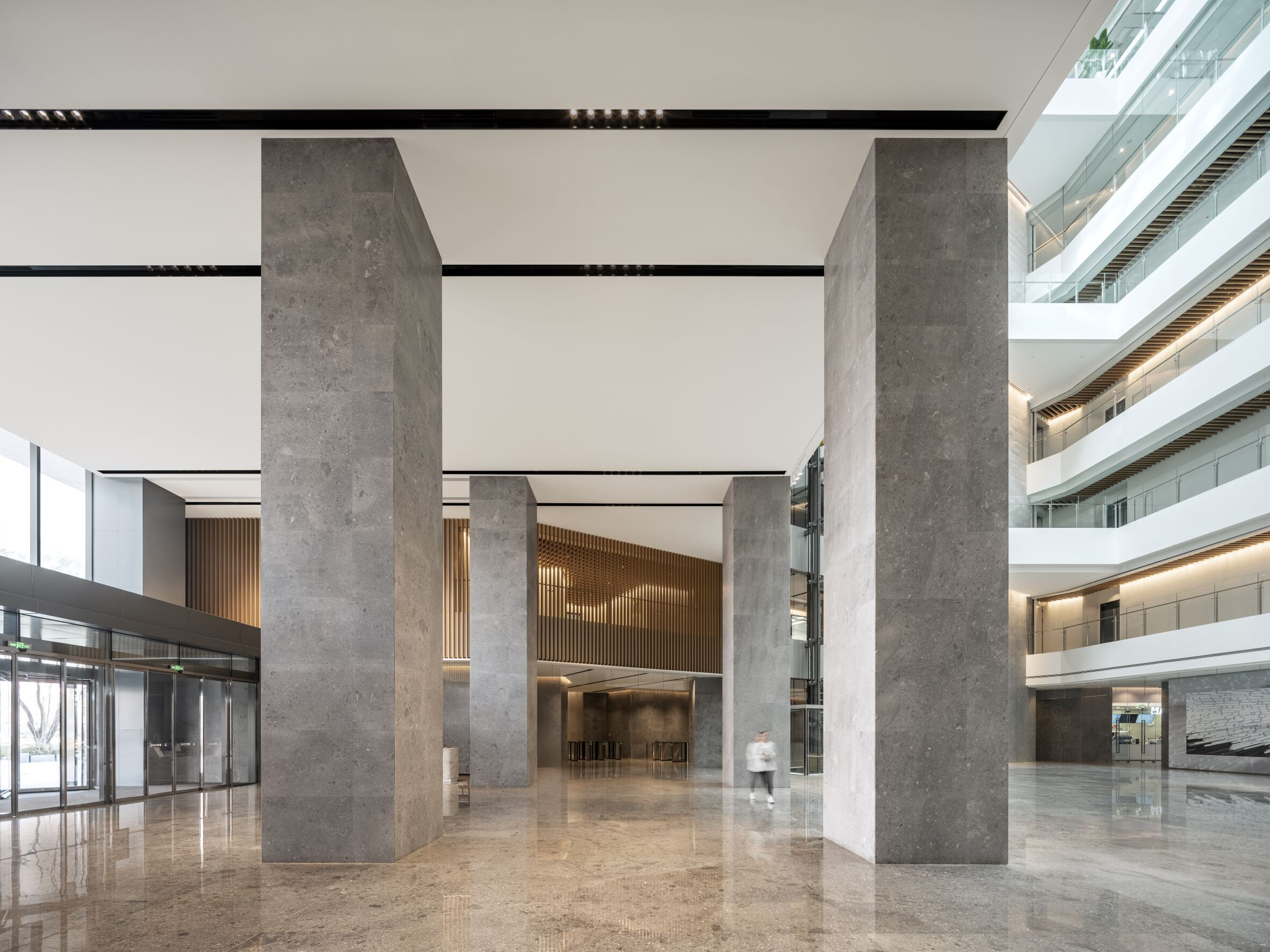
Urban Renewal Model Pioneering China’s Decarbonization
Instead of scrap-and-build, which has been the norm for urban renewal in China, we sought to change the use of the building from commercial to business offices while utilizing the existing structural frame, rearranging the floors rationally and renovating the frame as necessary. We also conducted a full exterior renovation by replacing the entire facade.

This project reduced embodied carbon emissions by 63% compared to a new construction project in which the existing building would be demolished and removed. Construction costs were reduced by 62%, and the construction period was shortened to about half that of new construction, contributing to the reduction of investment recovery risk common in redevelopment projects.
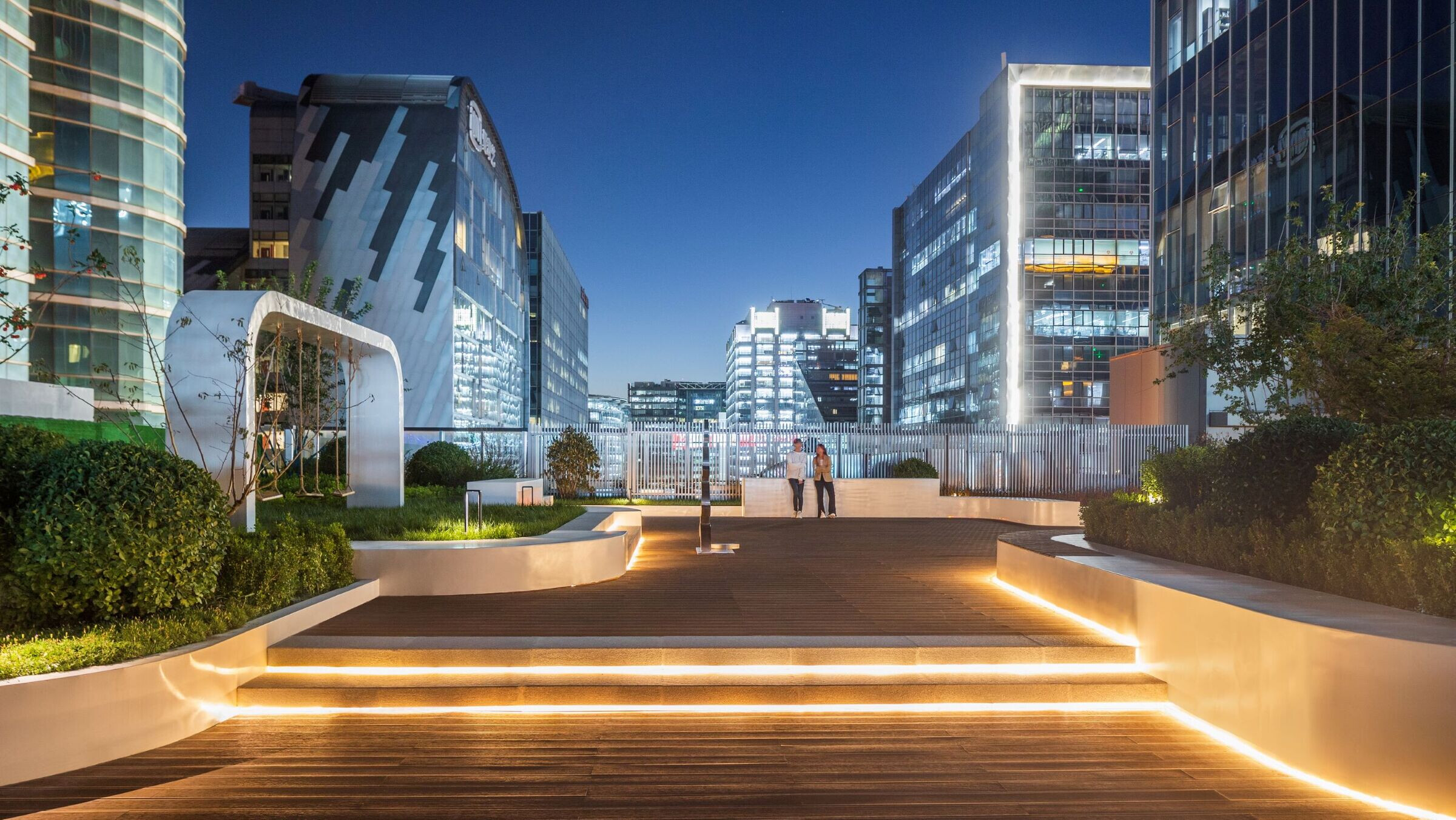
The recent policy challenge for China's major cities is to add new value to the old, anonymous buildings that can often be seen in the city and to utilize the stock of the city so that they can continue to be used. This project is attracting attention from the Beijing municipal government as a model project for urban renewal that combines decarbonization with business feasibility.

Rational reallocation of volume through renovation of the building frame
The building was previously a large-plate commercial building, but a void was created in the center of the building, from the ground floor to the top of the building. This part has low commercial value as an office building, so it was opened to create an atrium that directs natural light inside and ensure lighting across each floor. The resulting reduced floor space was added to the upper floors, which have high commercial value as office space, so that the total floor area would remain unchanged following the renovation. The floor area adjustments were made on 4,000 square-meters, or 7% of the total above-ground floor area, while minimizing construction and subsequent costs. The floors were rearranged to best suit the post-conversion use, successfully increasing the commercial value of the building overall.
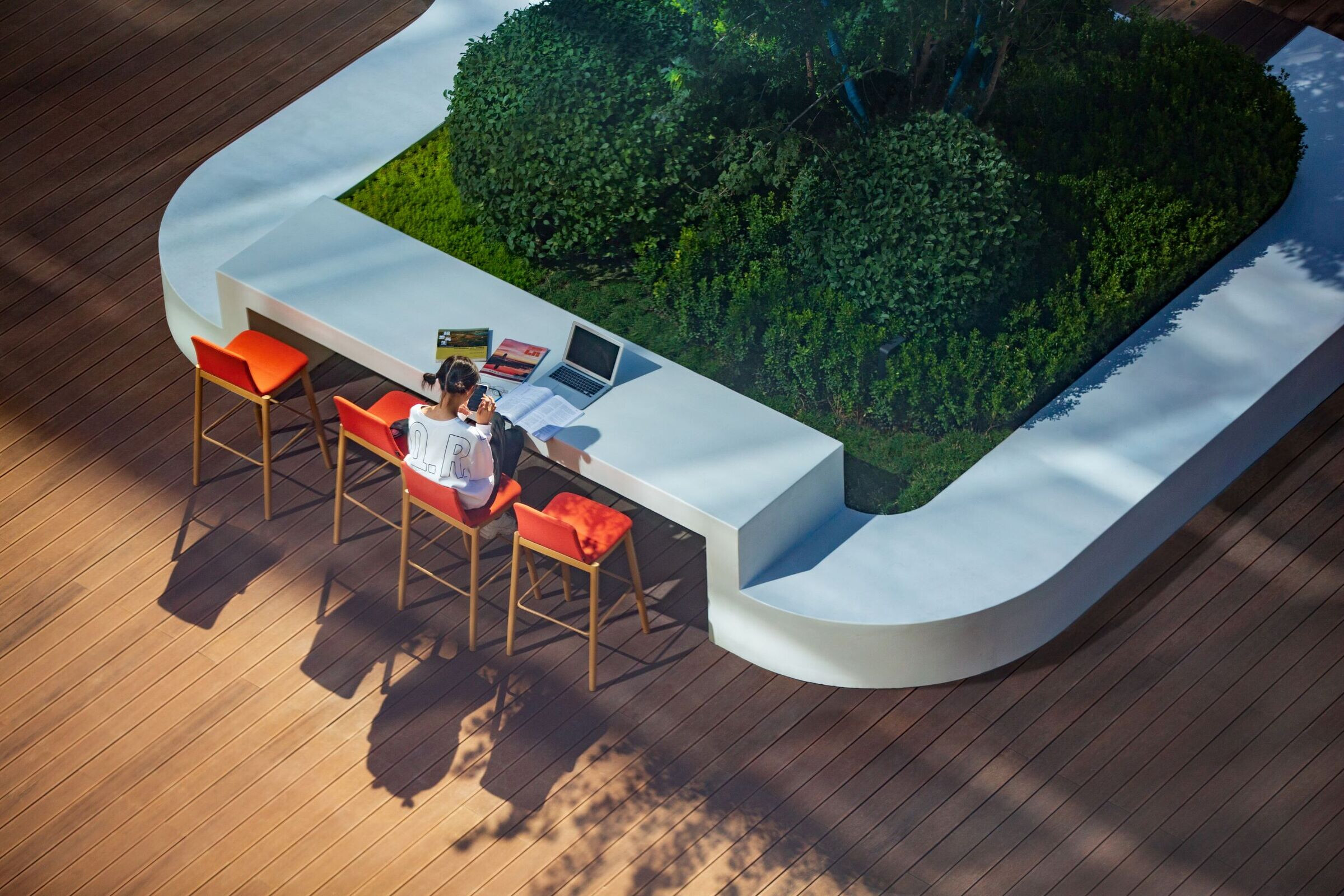
Hub function connecting the station and surrounding area with liveliness and innovation
Previously, a free passageway leading from the subway station to the center of Zhongguancun had been running through the commercial second basement level of the building. However, this passageway with its dark atmosphere was not actively utilized and had low foot traffic. Nikken Sekkei’s accumulated TOD experience and techniques were leveraged to connect the station and the city with bustling commercial activity along the underground passageway, creating a continuum of urban vitality and enhancing the value of the Zhongguancun area as a whole.
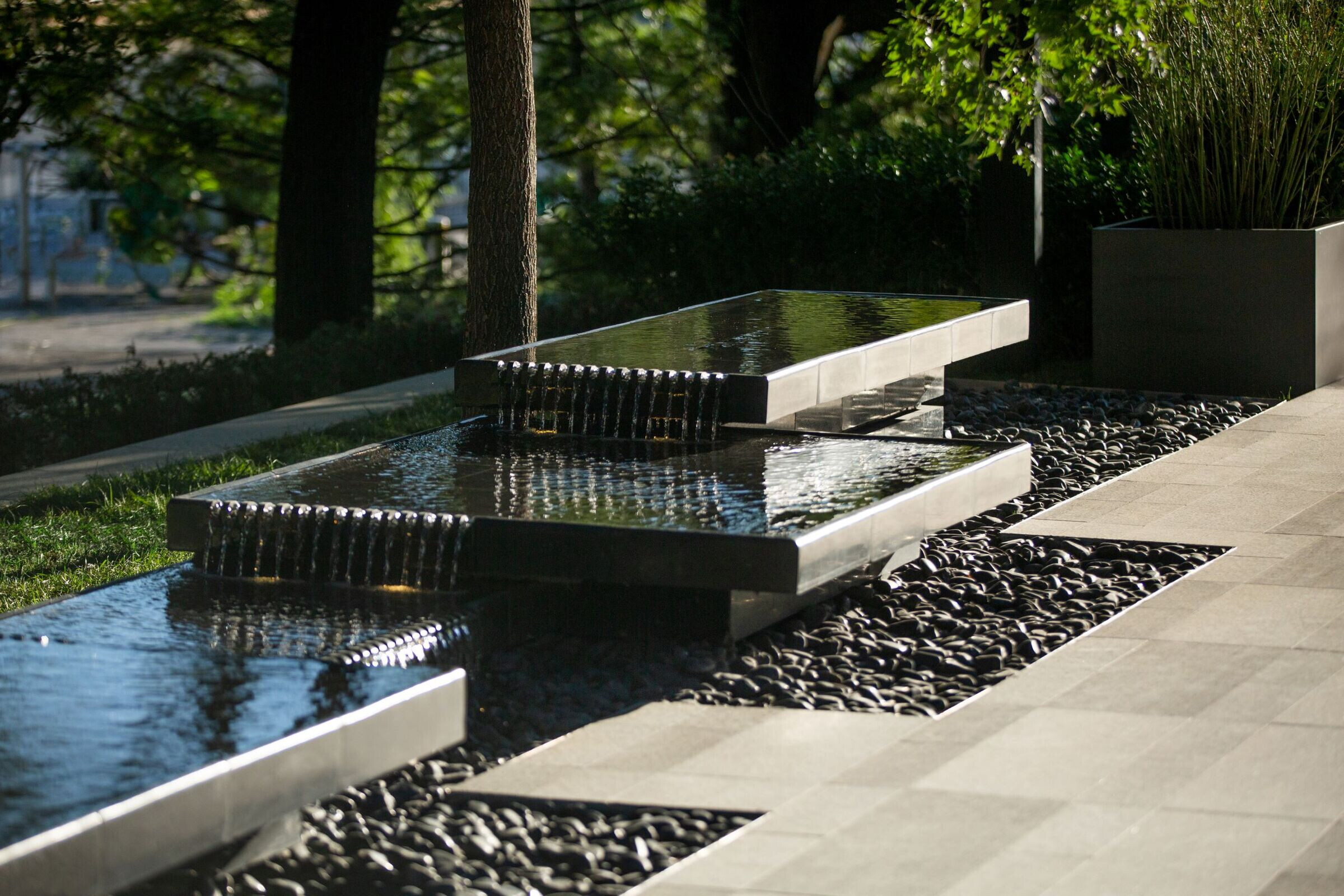
As a landmark in Zhongguancun, the center of innovation in China, this project will create an innovation network that engages the whole city by connecting this lively commercial zone to the communal space of the building. By exhibiting, experiencing, and interacting with the innovations created at this hub, we hope to create synergy and an ecosystem that will spark further innovations, helping the Zhongguancun area continue to develop as a center of innovation.
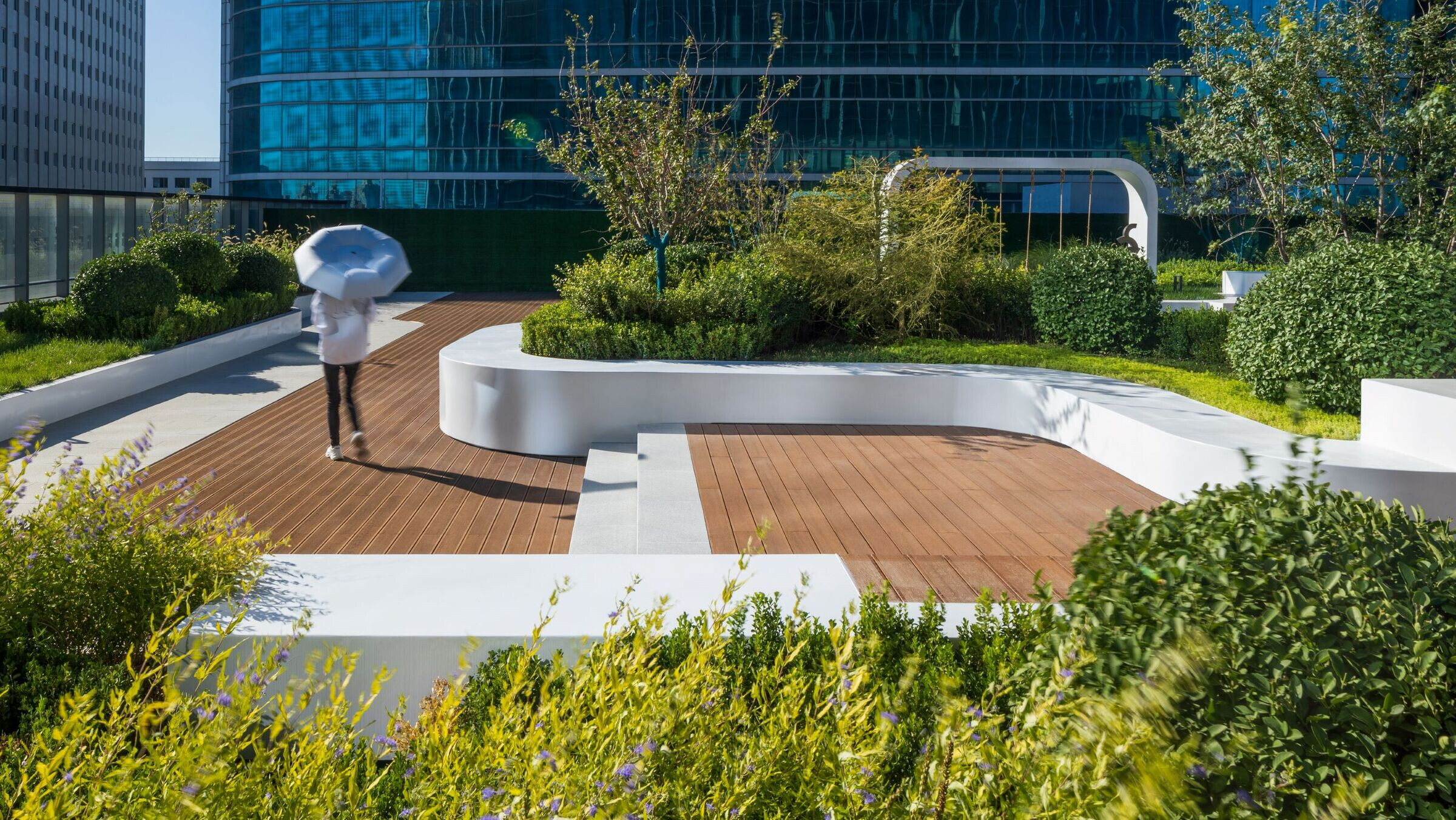
Full exterior renovation conforming to the new era of environmental performance
The exterior design was based on the concept of “inlaying” using different materials as a symbol of Zhongguancun, an area where diverse talents and technologies collide and engage in friendly competition. The proportions of the elevations are controlled by “inlaying” three types of exterior volumes such that the massive exterior of the building gets broken down to a scale that matches the surroundings.
The existing commercial facility had a flat format with a core located on the perimeter. We composed an “inlay” pattern to match the arrangement of the offices, which require windows for natural ventilation, and the core, where the exterior back of the core is expressed as a solid wall. This created a contemporary high-end office facility that both embeds functions and preserves the former memory within the building's skin.
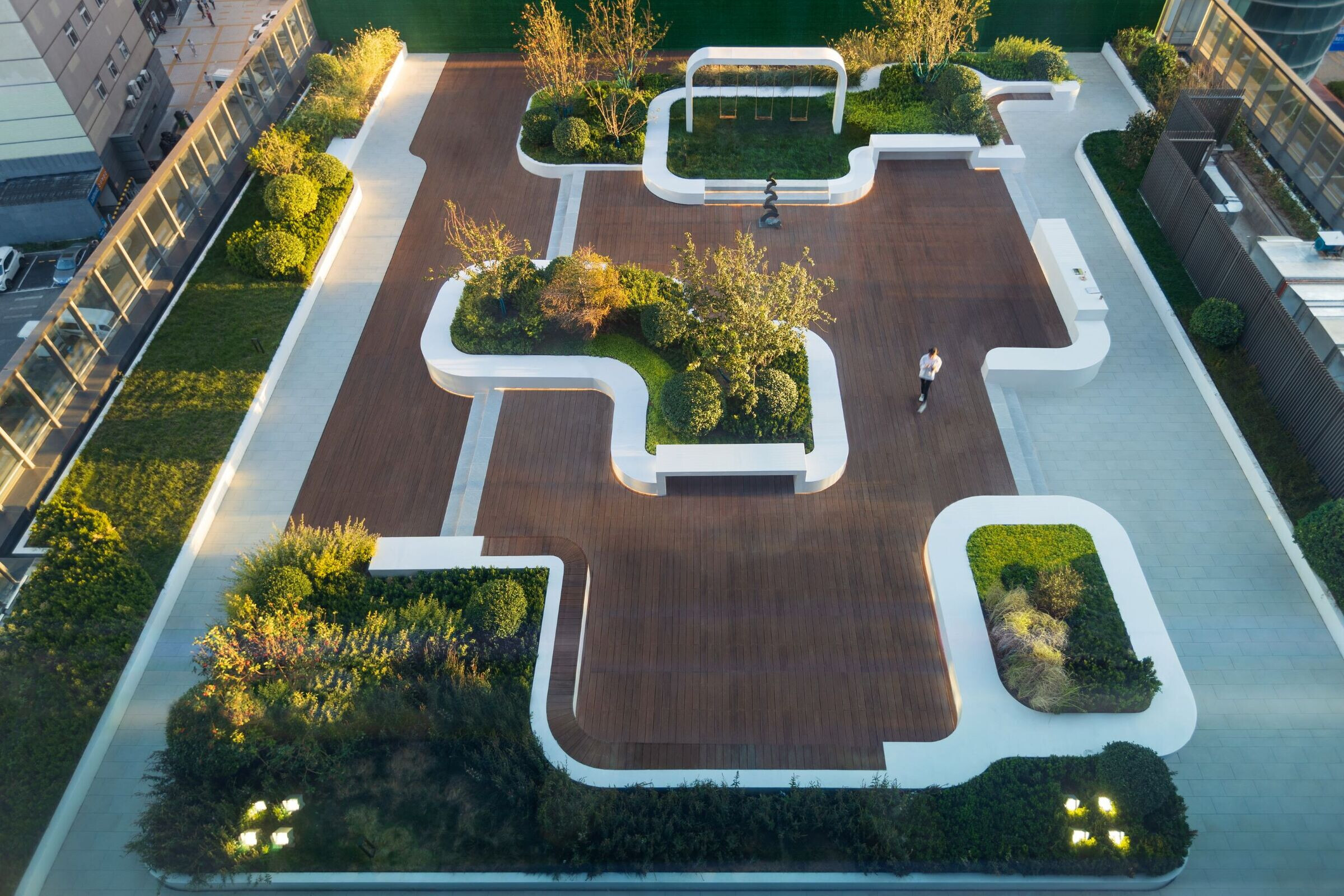
The entire existing skin, which was more than a decade old, was removed, and the commercial signage and patchwork of glass were completely replaced with a Low-E glass curtain wall. This renovation reduced operational carbon by 35% compared to the building’s former configuration.
This project sought to update a commercial building without tearing it down, by converting it to an office space and refreshing its exterior while maintaining a memory of the original building. We hope that this initiative to revitalize the popularly known “Ding Hao” will be evaluated as one answer to the movement toward zero-carbon emissions.

Project Outlines
Project name: Beijing Zhaotai / Zhongguancun Renovation Project
Usage: Office, Retail
Location: Beijing, China
Site area: 16,000 m2 (Total of phases 1 + 2)
Total floor area: 176,000 m2 (Total of phases 1 + 2)
Number of floors: 19 (Phase 1)
Eave height, highest point (m): 90.0 m (Phase 1)
Main structure: Reinforced concrete
Completion date: December 2021 (Phase 1)

Credits
Owner: Zhaotai Group
Lead architect: Nikken Sekkei Ltd
Main scope: Basic design (architecture, interior, landscape), implementation design (architecture, exterior), supervision
JV, joint design, supervision, consultancy, etc.: Beijing Victory Star Architectural & Civil Engineering Design CO., LTD (LDI), Gold Mantis (interior), ECOLAND (landscape)
Construction company: China Construction Eighth Engineering Division Corp., LTD
Other design collaborators: BPI (lighting design)
Photo credit 1: Zhen Jia Yao
Photo credit 2: Tian Fangfang
Photo credit 3: ZHANGJIN PHOTOGRAPHY (landscape)
Material Specs/product name Brand/manufacturer
Glass
Facade
Stone (interior)
